Tresus capax (Gould, 1850)Common name(s): Fat gaper clam, Gaper clam, Horse clam, Alaskan gaper, Summer clam, Otter clam |
|
| Synonyms: Schizothaerus capax | 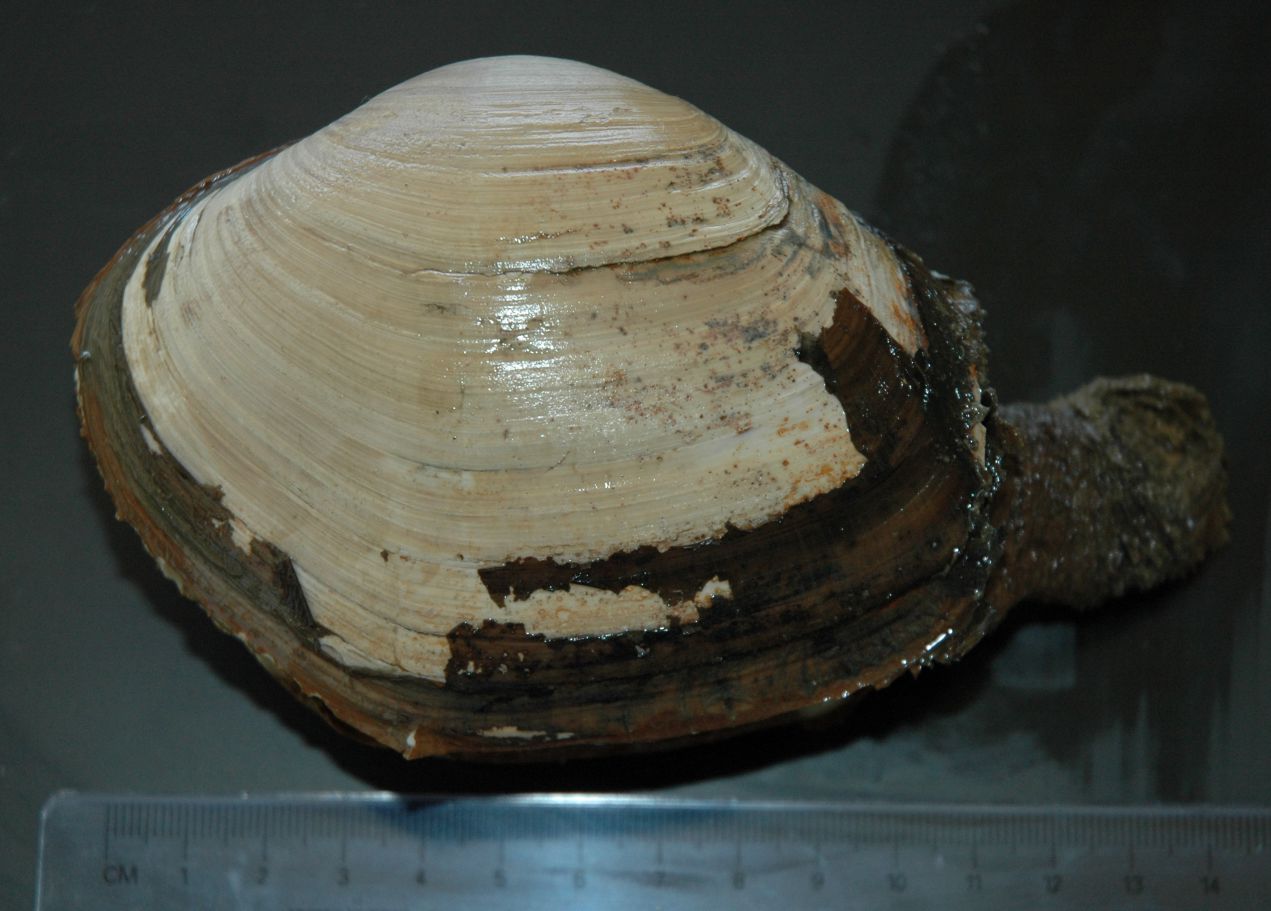 |
| Phylum Mollusca
Class Bivalvia Subclass Heterodonta Order Veneroida Family Mactridae |
|
| Tresus capax from Padilla Bay, WA. Scale is cm | |
| (Photo by: Dave Cowles, July 2005) | |
How to Distinguish from Similar Species: Tresus nuttallii (uncommon in our region of the Salish Sea but common elsewhere) has a shell more than 1.5x as long as high and the umbones are near the end of the anterior quarter
Geographical Range: Kodiak Island, Alaska to central California. Uncommon in California.
Depth Range: Middle and low Intertidal and subtidal to 30 m
Habitat: Burrowing in mud and clay, to depths of up to 1 m; in quiet bays (occasionally on the outer coast)
Biology/Natural
History: These clams
have extremely long siphons
which extend up from their deep location to the surface of the
mud.
The incurrent
and excurrent
siphons
are fused
together but the internal channels are separate. Predators
include
the moon snail Euspira
lewisii, the crab Cancer
magister, and the seastars Pycnopodia
helianthoides and Pisaster
brevispinus. Fusitron
oregonensis will attack it if it gets the
chance. Commensals
include the crabs Pinnixa
faba and Pinnixa littoralis, in
the mantle
cavity. The small male crabs move around but the
larger females
remain sheltered by a fringe of tissue, the visceral skirt, attached to
the clam's visceral
mass. They scrape plankton from this
fringe. During the
winter this clam depletes its glycogen stores from the
gonads. Fat
stores (in the digestive diverticula) are only used if the glycogen has
been exhausted. This clam is often eaten by man, especially
by native
Americans. When dug up, this clam may not be
capable of reburying
itself again. In Washington, reaches maturity in 3-4
years.
Spawn in winter.
| Return to: | |||
| Main Page | Alphabetic Index | Systematic Index | Glossary |
References:
Dichotomous Keys:Kozloff 1987, 1996
Smith and Carlton, 1975
General References:
Brusca
and Brusca, 1978
Harbo,
1997
Kozloff,
1993
McConnaughey
and McConnaughey, 1985
Morris
et al., 1980
O'Clair
and O'Clair, 1998
Ricketts
et al., 1985
Scientific
Articles:
Web sites:
Washington
Dept of Fish and Wildlife clam page
General Notes and Observations: Locations, abundances, unusual behaviors:

The shell of Tresus capax has a large gape at the posterior
end to accomodate the large siphons
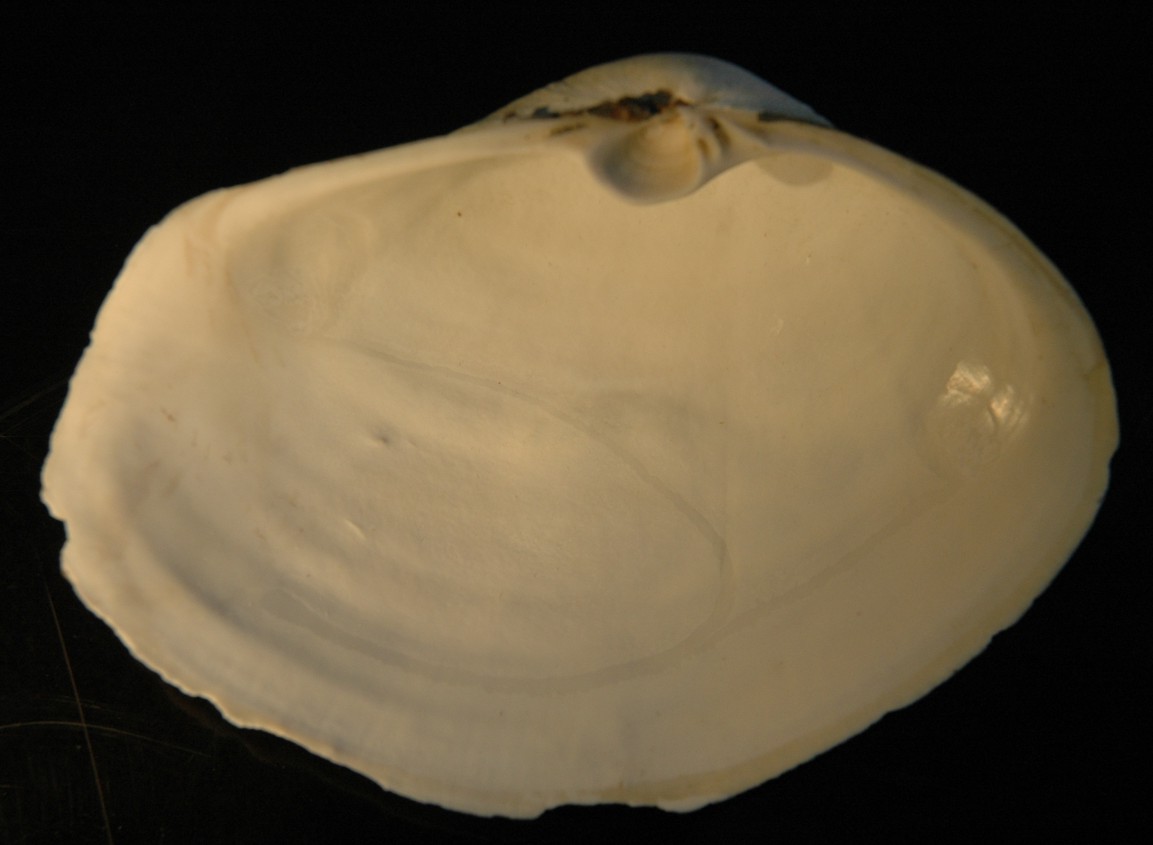
Because of the large siphons,
Tresus capax has a very deep pallial
sinus. It has a continuous pallial
line. Note also the almost equal-sized anterior
and posterior
adductor
muscle
scars.
The posterior
end is to the left.
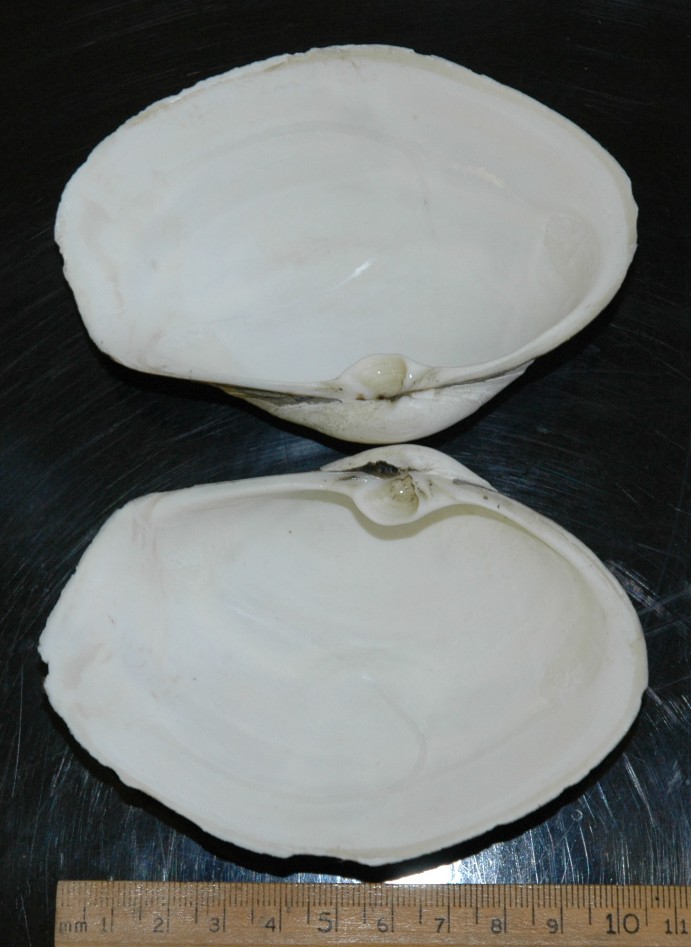
The shell is less than 1.5 times as long as it is wide.
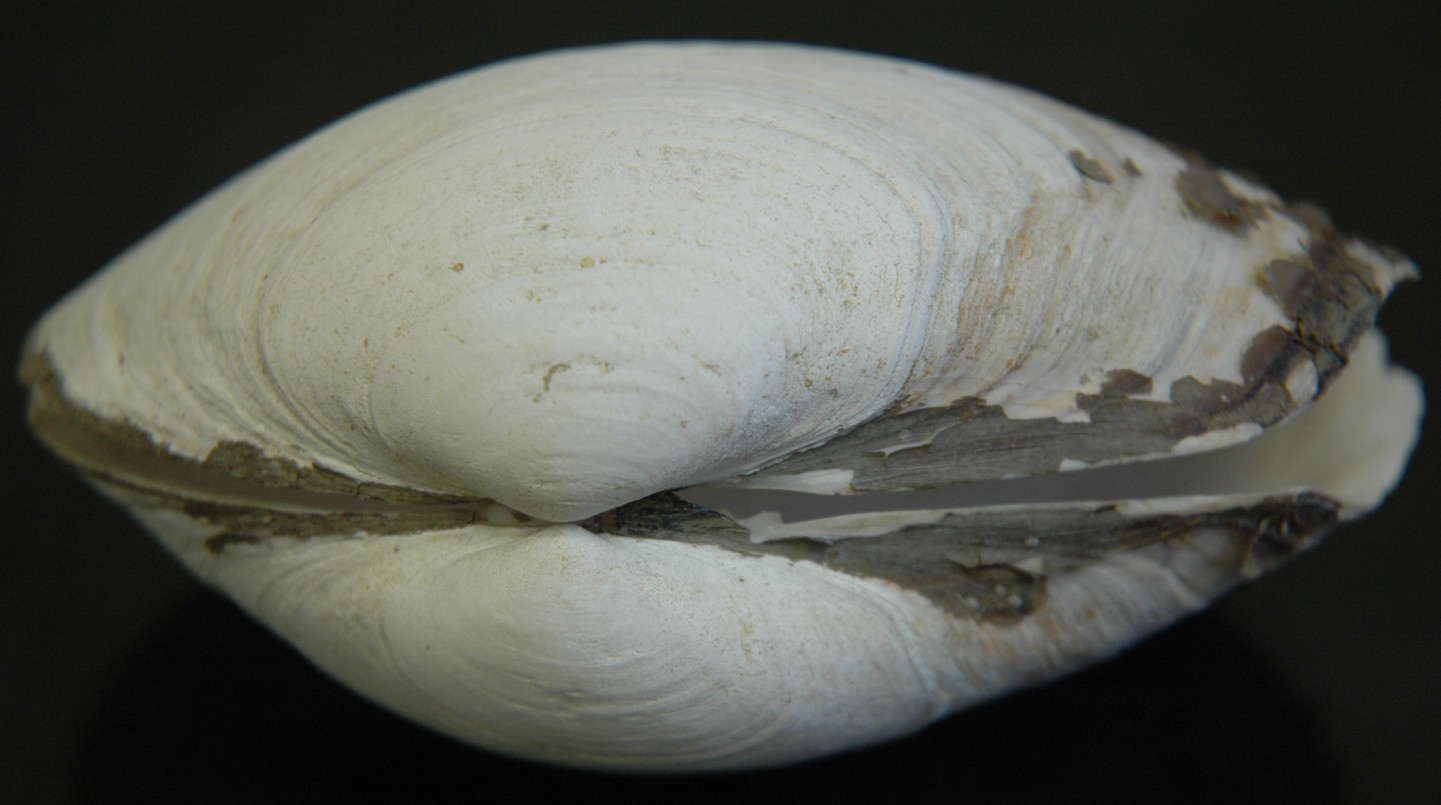
The umbo
is about
1/3 the way from the anterior
end of the shell (to the left in this photo). The hinge
(to the right of the umbo)
is thin
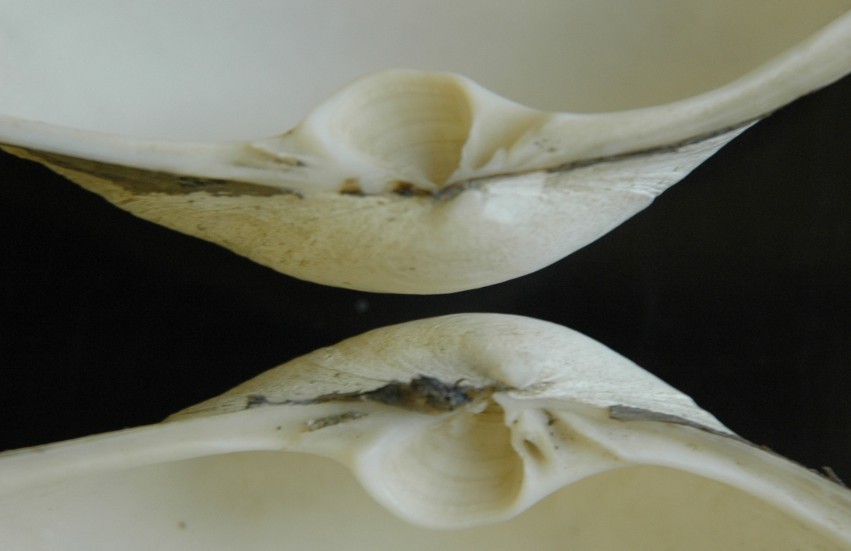
There is a shelflike chondrophore
and several hinge
teeth on both hinge plates. Top = right valve, bottom = left
valve.
Anterior
is to the right.
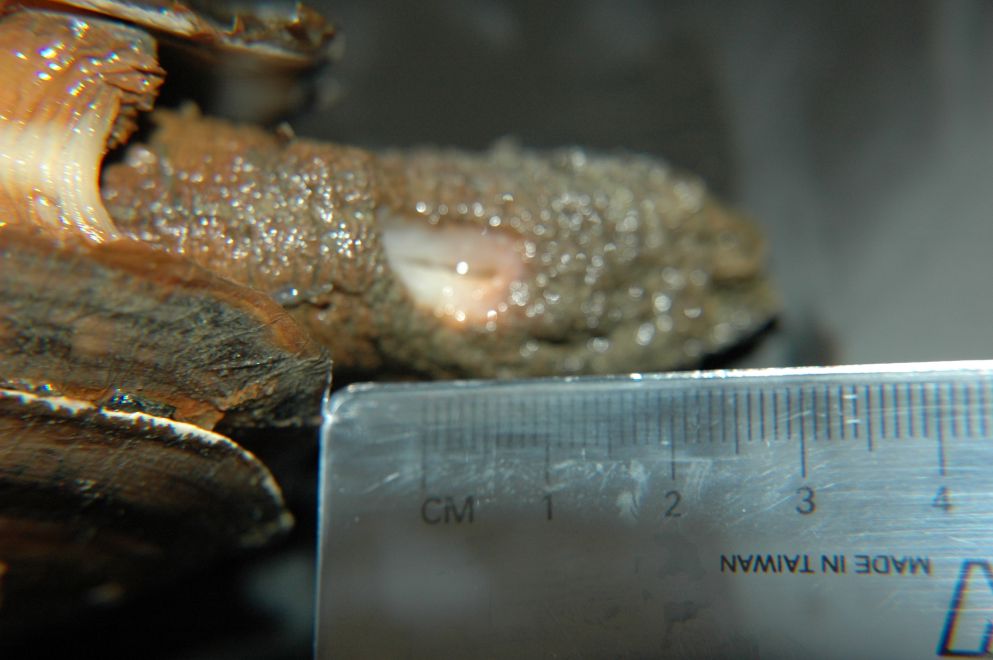
The gouge on the siphon
of this individual is due to a bite by the predatory hairy triton snail
Fusitron
oregonensis.
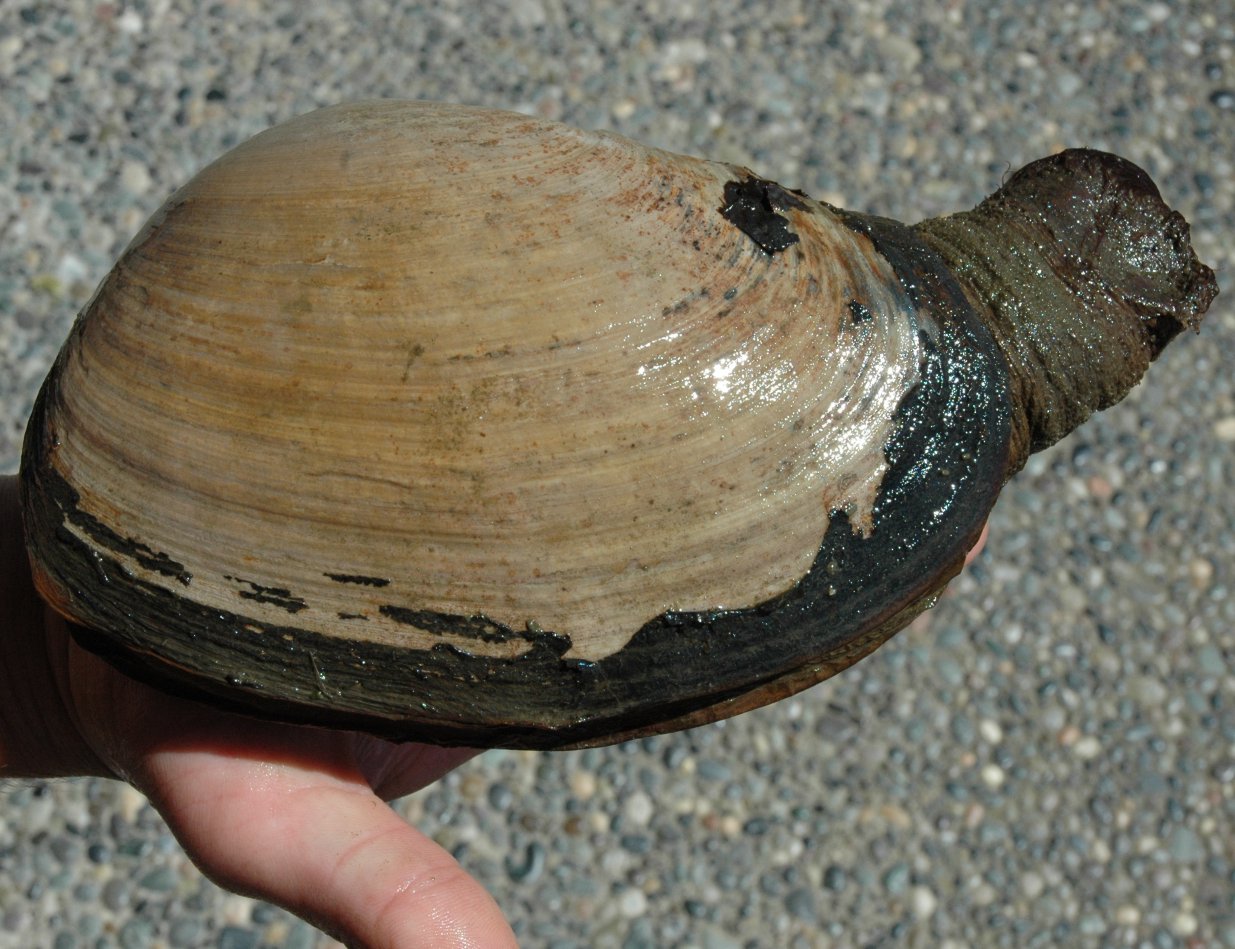
This individual from March Point has a shell length of 19 cm and shell
height of 11 cm. It has retracted its siphon
about as far as it can but before retraction the siphon
was 18 cm long, or about as long as the shell.
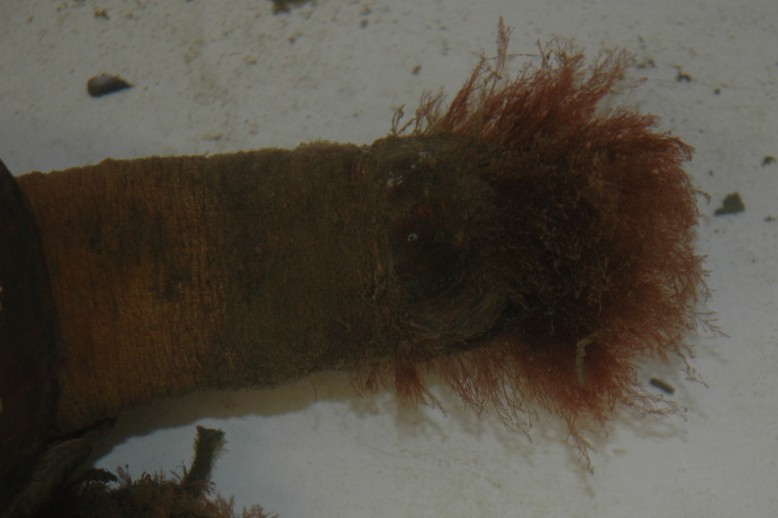
On some mud flats the tips of the large siphons,
which are exposed at the surface when feeding, become overgrown with
red
algae such as Polysiphonia, as seen here.
Photo by Dave Cowles 2007
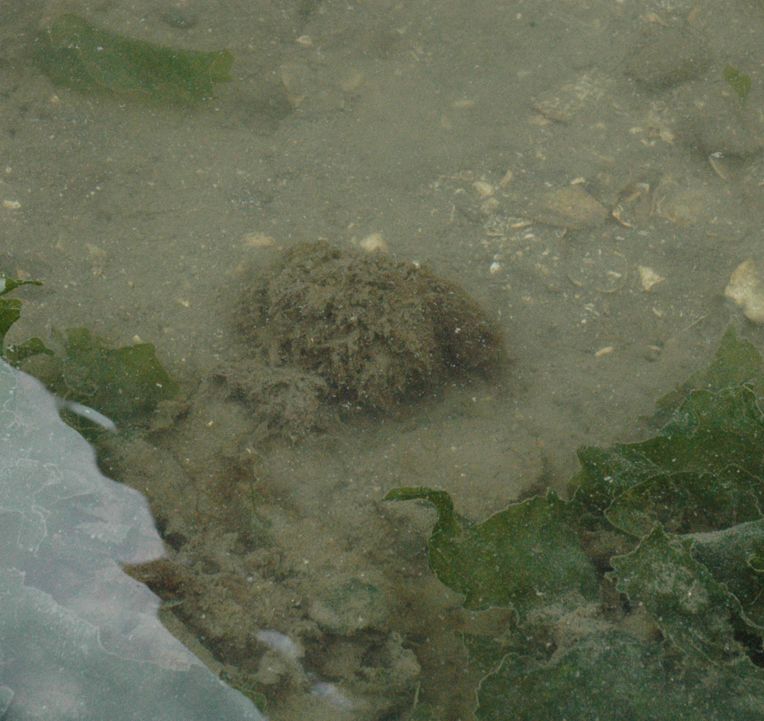
This photo shows a gaper clam siphon
in situ, in the upper center of the picture. It is so
overgrown with
a tuft of red algae (about 8 cm across) that it is well camouflaged.
Photo by Dave Cowles, July 2016
Authors and Editors of Page:
Dave Cowles (2005): Created original page